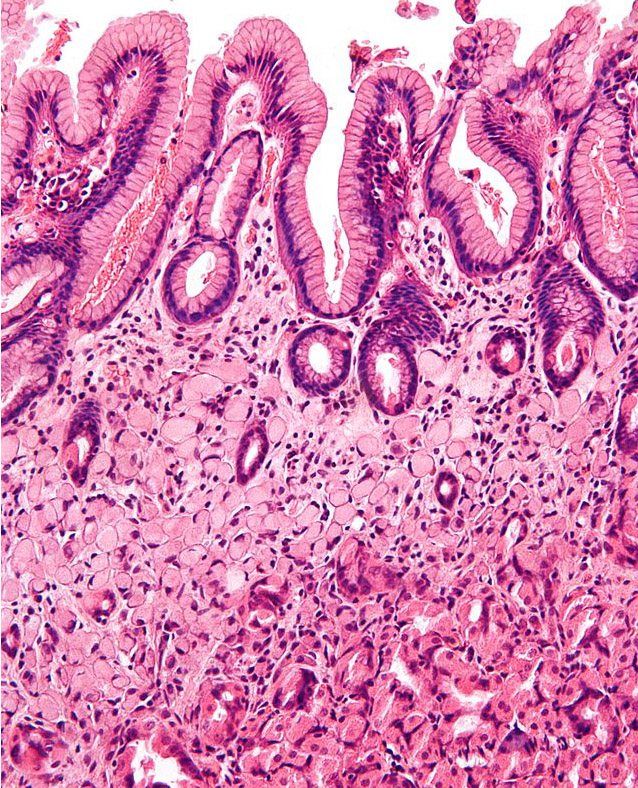But We Can’t Even Define Life
In my previous blog I addressed some important issues in making the case that fine-tuning supports theism over atheism. Today I want to look at the objection against fine-tuning that says we can’t assess fine-tuning claims because we can’t even define ‘life’ – or put another way: “fine-tuning claims don’t properly account for other possible life forms.” It has proven surprisingly hard for scientists to agree upon a definition for life. This uncertainty, however, hasn’t prevented biologists from making inferences about life nor has it kept physicists from writing numerous articles claiming that certain changes to physical constants would have resulted in a lifeless universe. In most cases, the inference to a lifeless universe is based upon severe catastrophes such as:
- A very short-lived universe
- No stable atoms
- No chemistry
- No long-lived sources of energy (such as stars)
It seems plausible that in these situations no life could arise of the kind that could evolve into intelligent, rational creatures. Many fine-tuning constraints involve multiple life-permitting criteria so that even if one of them was incorrect, there would still be other constraints on the life-permitting range of values based on different life-permitting criteria. John Leslie affirms that “many of the fundamental constants have to take the values they do for several independent reasons.” Moreover, even if half of the fine-tuning claims were mistaken there would still be a sufficient number of finely-tuned parameters to conclude that life-permitting universes are rare among possibilities. My fine-tuning claim is therefore robust since it doesn’t rely on all physicists’ claims being true – here it is again:
In the set of possible physical laws, parameters and initial conditions, the subset that permits rational conscious life is very small.
If some peer-reviewed articles are in error, there might be other articles defining other constraints or at least there would be enough remaining evidence to conclude that the life-permitting universes are rare among possibilities. But let’s look in detail at what is necessary for life according to scientists.
What are some essential attributes of any plausible life form?
Self-replicating
Any life form that could evolve to possess intelligence would have to include a self-replicating system. John von Neumann showed that any self-replicator requires certain features such as information storage and processing. Any information storage system would need to be comprised of reasonably stable entities. A star, for example, is a hot plasma of charged particles in rapidly changing configurations and thus is deemed implausible to store information needed to originate and sustain life. Also, in the near vacuum of space there are so few particles interacting that there is no plausible way to replicate enough information for complex life.
Non-trivial information content
As origin of life researcher Stuart Kauffman has noted: “all living things seem to have a minimal complexity below which it is impossible to go.” One theoretical estimate for the amount of information for the simplest possible life form is 113,000 base pairs.[1] Any life form is likely to require polymers of some type to serve as building blocks that can be replicated. There are multiple ways in which a lack of finely-tuned parameters could have prevented the formation of any atoms beyond hydrogen. In this scenario, there would be no polymers and indeed no chemical compounds except for H2. It is implausible to think that if only hydrogen ever existed in the universe that we would have intelligent life or so many physicists have argued.
Preservation of information content during replication
We also have some indications from our own planet of the importance of high fidelity information replication. The canonical genetic code that provides the mapping from RNA codons to amino acids used on our planet is highly optimized and arose early in life’s history[2] (else it wouldn’t be as universal.) Biologists interpret this as evidence of the importance of minimizing errors during translation and replication. The ability to preserve information is therefore recognized as being highly important for life.
Ability to harness energy from environment
Life must be able to harness energy from the environment or else the Second Law of Thermodynamics would pose an insurmountable hurdle. A long-lived stable energy source such as a star would therefore be required.
These same constraints and additional ones are described as prerequisites for life in an important article[3] in the Proceedings of the National Academy of Sciences (PNAS) that explains the attributes of alternate life forms that might eventually be found elsewhere in the universe. This article serves to confirm that the physics literature is making generous assumptions about what could be life-permitting. Here are some key points of the article with my comments provided after the quotations:
- “It is predictable that life, wherever we encounter it, will be composed of macromolecules.” I agree – information and storage would most likely require polymers of some type.
- “Only two of the natural atoms, carbon and silicon, are known to serve as the backbones of molecules sufficiently large to carry biological information.” I think that most physicists writing about fine-tuning are open to more alternatives than this article but the article raises some important points about the unique suitability of carbon:
- Carbon “unlike silicon … can readily engage in the formation of chemical bonds with many other atoms, thereby allowing for the chemical versatility required to conduct the reactions of biological metabolism and propagation. … Silicon, in contrast, interacts with only a few other atoms, and the large silicon molecules are monotonous compared with the combinatorial universe of organic macromolecules”
- “Life also must capture energy and transform that energy into the chemistry of replication. The electronic properties of carbon, unlike silicon, readily allow the formation of double or even triple bonds with other atoms.”
- “It is critical that organic reactions, in contrast to silicon-based reactions, are broadly amenable to aqueous conditions. Several of its properties indicate that water is likely to be the milieu for life anywhere in the universe.”
- “Life that depends only on chemical energy inevitably will fail as resources diminish and cannot be renewed.” This agrees with my point about needing a stable, long-term energy source to overcome the Second Law of Thermodynamics.
- “Temperature is a critical factor for life. Temperatures must be sufficiently high that reactions can occur, but not so high that that complex and relatively fragile biomolecules are destroyed. Moreover, because life probably depends universally on water, the temperature must be in a range for water to have the properties necessary for solute transfer.” Again I think that the physics literature is more open-minded in this aspect but certainly at some point it becomes too hot or too cold to either reliably store information or to have enough energy to replicate it.
But Does Life Have to be Carbon-Based Life?
My fine-tuning claim and that by prominent advocates such as Luke Barnes don’t presuppose that any life form would have to be carbon-based – it’s much more general than that. However, this PNAS article is one of many to claim that silicon is the best alternative to carbon as a basis for life. Silicon bears some similarities to carbon as expected from its position just below carbon on the periodic table. If we can understand why silicon-based life doesn’t appreciably increase the possibilities for life, then we can gain confidence in the generality of the fine-tuning claim.
As the PNAS article indicates, carbon is much more suitable for life than is silicon. Consider the specialness of carbon with regard to the number of types of molecules that can be formed with H (hydrogen) and the following elements[4]:
H – 1
He – 0
Li – 1
Be -1
B – 7
N- 7
O -2
Ne-0
C (carbon) – over 2300 known types of molecules just involving C and H
Revisiting our dartboard analogy, consider how a life-permitting region is tiny among possibilities. As a reminder, just one finely-tuned parameter, the cosmological constant, has to be set in a narrow life-permitting region among possibilities that is comparable to hitting a bull’s-eye on a huge wall that is 376 million light-years per side. If the life-permitting region for carbon-based life is small, the region for silicon-based life should be smaller since silicon is less suitable for life than is carbon. Although there is one fine-tuning constraint that specifically references carbon, it turns out to also be applicable to silicon. Unless there was a nuclear resonance at just the right energy level, fusion in stars might have never produced carbon. However, without this resonance level there would be a bottleneck that would also inhibit silicon or elements heavier than carbon from being synthesized. Stars make carbon on the way to making silicon. (Most elements past beryllium were synthesized in stellar fusion from smaller atoms.) Thus, universes that produce silicon are no more likely than those that produce carbon – so the bull’s-eye for silicon-based life is smaller and basically just overlaps the carbon bull’s-eye.
Lessons Learned from Origin of Life Research
Consider how some origin of life researchers admit that the origin of the first life form from non-life is exceedingly improbable even with carbon and a diversity of other elements, long-lived stars, and other helpful attributes in our finely-tuned universe. For example, Christian Schwabe writes: “the formation of the first life is viewed as a chance process that occurred in spite of minuscule odds such as 1:10300 and which is accepted only because we are here.[5]“ Eugene Koonin appeals to the multiverse to overcome a horrendous improbability that he estimates at 10-1018 for a plausible first evolvable cell. Not all researchers are this pessimistic but the slow progress in the field should caution those who think that non-carbon life forms a large region in the space of possible parameters. If carbon is so clearly the best choice for life as most biologists believe and if the origin of life is somewhat of an unlikely event even utilizing organic (carbon-based) molecules such as RNA, how much more unlikely is a naturalistic origin of life without carbon.[6]
Fine-Tuning for Intelligent Life
Recall that my fine-tuning claim refers not to just any life form but to intelligent life. Since theism predicts that God would want some advanced life forms, this raises the bar for constraints on life-permitting universes. If merely primitive replicating cells could originate in somewhat less finely-tuned universe, this still would not count against my fine-tuning claim unless this life could also evolve to achieve intelligence and self-awareness. Clearly more fine-tuning is required for the universe to support rational conscious life than would be required for very primitive life forms.
Closing Thoughts
Most physicists writing about fine-tuning think that there are some very clear-cut cases of fine-tuning such as that for the cosmological constant. Consider, for example, how Nobel prize-winning physicist Steven Weinberg has argued for a multiverse explanation to the fine-tuning of the cosmological constant. He posits vast numbers of universes each with different values for the cosmological constant, the energy density of empty space. Weinberg’s argument for the value being consistent with multiverse predictions relies on a hard limit[7] for the life-permitting range so that our universe can be considered typical among life-permitting universes[8]. Smolin and others have critiqued his prediction as not being that close to what a multiverse would predict but that is irrelevant to my current point which is simply that Weinberg clearly believes that varying this constant by a tiny amount among the possibilities would result in no life of any kind living anywhere in that universe. Refer to my multiverse blog for why our universe would need to be typical among life-permitting universes for a plausible multiverse explanation.
Few physicists specializing in fine-tuning point to other possible forms of life as a supposed refutation to the fine-tuning argument but those who do should write rebuttals to the many peer-reviewed articles claiming life would not exist in certain scenarios involving different physical constants or initial conditions. Skeptics need to show why these authors were mistaken. Perhaps this is a good point of emphasis in urging physicists to be careful in their claims. If some of these fine-tuning claims are over-stated though this would actually provide evidence against a multiverse explanation to the fine-tuning because it would represent ways in which our universe is overly fine-tuned for life. A naturalistic multiverse predicts that our universe should not be more fine-tuned than is minimally necessary to support life.
[1] Forster A. C., et al. Nature Mol. Syst. Biol., 2 . doi:10.1038/msb4100090 (2006).
[2] Early Fixation of an Optimal Genetic Code. Molecular Biology and Evolution. Oxford Journals. Stephen J. Freeland2, et al.
[3] Pace, Norman. “The universal nature of biochemistry”. Proceedings of the National Academy of Sciences 98 (3) (2001): p. 805–8.
[4] This was presented by Luke Barnes at the Philosophy of Cosmology conference in 2013 in Santa Cruz, CA.
[5] Schwabe. Comparative Biochemistry and Physiology Part B: February 1994: (Volume 107, Issue 2) p. 167.
[6] In this blog, I have no intention of getting into discussions about whether or not we have evidence for divine intervention in the origin of life – that is a separate topic. Note that the origin of life and fine-tuning are separate issues. Fine-tuning deals with setting up an environment conducive to life – sort of like that biosphere they setup in Arizona. Conversely, origin of life relates to whether or not life forms were put into that biosphere or originated from non-living matter within it.
[7] By ‘hard limit’ I mean that no other life forms could exist anywhere in universes with cosmological constants whose absolute value exceeded a threshold that is about 120 orders of magnitude less than the natural values predicted by the Standard Model of Particle Physics. BTW, Weinberg first coined the term “Standard Model.”












Leave a Reply
Want to join the discussion?Feel free to contribute!